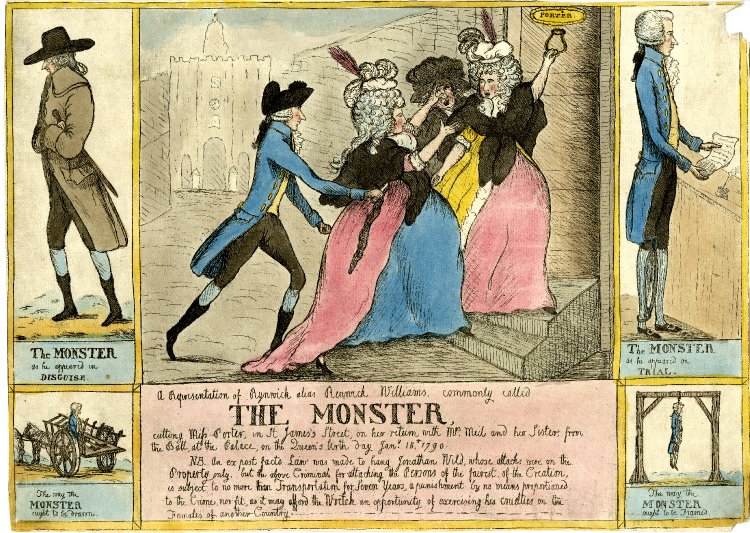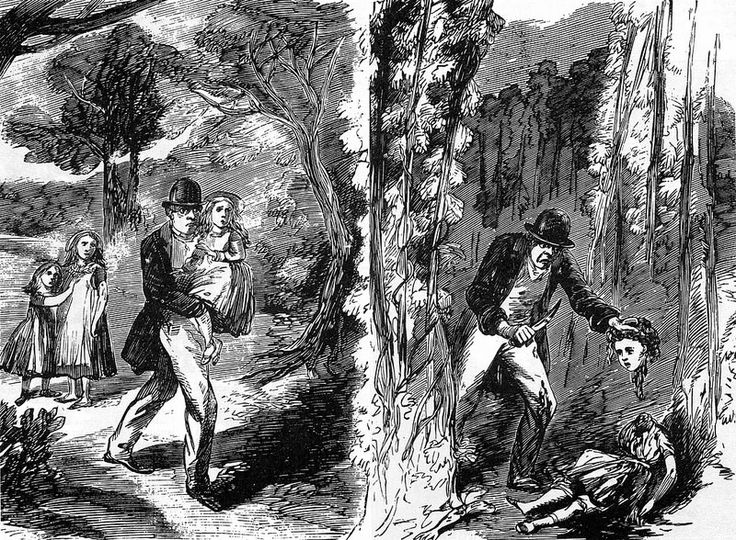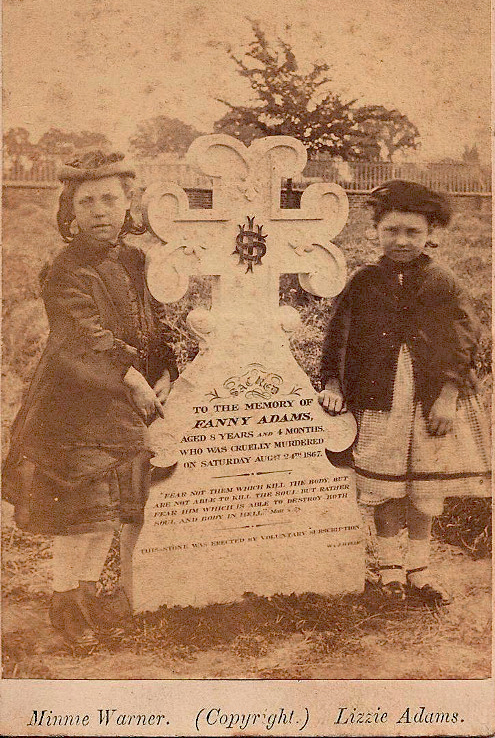SERIAL KILLERS BEFORE
JACK THE RIPPER - PART 3
THE BRITISH
Slouching Toward Whitechapel: Sex Crimes in Britain Before Jack the
Ripper
As amazing as it seems, there appear to be no recorded
cases of pathological lust sexual serial killers in Britain before the
appearance of the Whitechapel "Jack the Ripper" serial killer in 1888.
That does not mean there weren't any; only that no account on the
historical record survived if there were. (And surely there were.) The
legendary Sweeney Todd, the “Demon Barber of Fleet Street” in London who
cut his customers’ throats with a razor and tipped their bodies out of
their chair down a chute into the basement of the barbershop, is just
that: a legend. The case of the Sawney Bean cannibal clan that
supposedly killed hundreds of victims in Scotland, salting some of the
corpses for winter feeding, is apparently as much a myth as Sweeney
Todd. The Sawney Bean tale is an artifact of a sixteenth-century
The Hills Have Eyes/The Texas Chainsaw Massacre brand of war
propaganda disseminated during England’s conquest of the northlands.
As in frontier United States, there were outlaw serial killer bandits in
Britain and there were female serial poisoners in the Victorian age, and there were the serial killer
partners William Burke and William Hare in Edinburgh, Scotland, who
perpetrated at least sixteen murders in 1828, but that was strictly
business: they were selling corpses for profit to medical schools. There
were, however, two notorious cases widely reported of psychopathological
sex crimes that shocked Britain and would set the stage for the
appearance of Jack the Ripper.
The “London Monster”—1790.
(Below) From 1788 to 1790, an incipient serial
“werewolf” was stalking London’s well-dressed women. He would approach
them as they fumbled with their keys at their front doors, or he would
suddenly rush up on them from behind on the street, and drawing his head close to
their ear and shoulder, he would mutter obscenities and viciously slash
and stab them in the buttocks through their silken dresses. More than
fifty women reported being assaulted by the perpetrator.
Some were hit across the back of the head by his fist; others he abused
only verbally; some of those he slashed escaped injury due to the
fashion of the day, consisting of multiple thick petticoats, stays and
bloomer-type underwear. But not all escaped unharmed.
Two sisters returning from a royal birthday ball were at the front
door of their London town house when the Monster ran up on them and,
pinning one between the door and front railing, mumbled obscenities and
then drove a knife through her evening dress. The physician who treated
her testified that the gash from her lower back to buttocks was nine
inches in length and ran as deep as four inches at one point; it would
have penetrated into her abdomen had her stays not deflected it. It took
effort for the offender to drive the edged weapon home, and in some of
the cases he was reported to have dropped to one knee to force the blade
deeper. These were raging, angry attacks, and potentially lethal.
London was as shocked and alarmed by these extraordinary and
inexplicable attacks as they would be by Jack the Ripper a hundred years
later. Today a series of assaults like these would be recognized
as warning signs of a serial predator likely to continue escalating the
violence and lethality of his attacks.
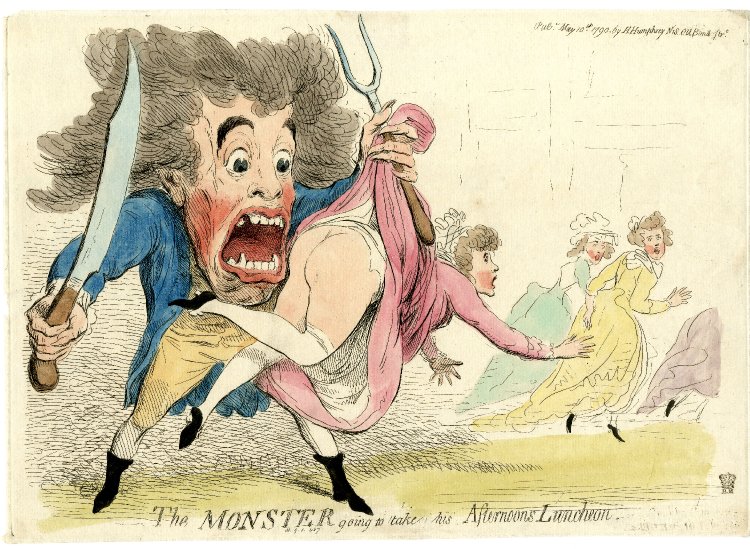
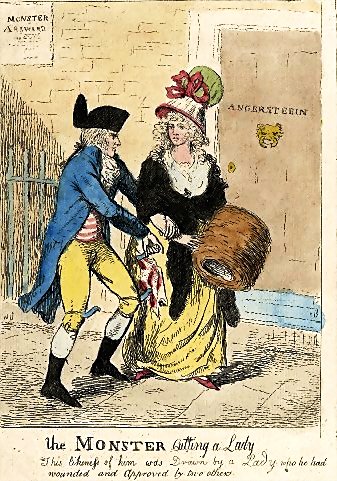
(Below) In June 1790, one of the victims and her companions
thought they recognized their assailant, and he was pursued, brought to
them, identified and arrested. He turned out to be a thirty-five-year-old
Welshman named Renwick (Rhynwick) Williams. Unlike the brutal, ugly monster
everyone expected, Renwick was a handsome gentleman who was popular with
women, just like Ted Bundy would be in his day.
The press and noisy crowds outside the jail were calling for the Monster to
be hanged, but due to the peculiarities of the criminal code at that time,
assault, even with intent to murder, was a mere misdemeanor. Having been
panicked for two years, however, the public was demanding stiff punishment
for the Monster. The prosecution was hard-pressed to find an appropriate
felony with which to charge Renwick Williams. He was eventually charged with
three counts of the misdemeanor assault, carrying a penalty of two years for
each conviction. Although no knife had ever been found in his possession,
and Renwick had never been seen with one and had no record of attacks
against women, he was convicted and sentenced to six years while proclaiming
his innocence all the while. After his release, Williams married, fathered a
child and then vanished from history.
Historians debate the question of his guilt or innocence, but the attacks
spawned a number of copycat 'monsters' in France and Germany. In Paris in
1819, women on the street were attacked and cut about the thighs and
buttocks by piqueurs (from the French for “to prick”). The term “piquerism” is
still used today in forensic psychopathology to describe paraphilic stabbing
or slashing committed as a substitute for sex. The attacks are most
often focused on the breasts, buttocks, genitals or torso of a victim with
the offender relishing the penetration, and the sight and smell of blood and
abdominal viscera expelled through the wounds.
Frederick Baker—Alton, Britain, 1867.
(Below) The first seriously twisted, lycanthropic,
sadistically pathological sexual-lust murder on the record in modern
Britain occurred in 1867 in Alton, Hampshire, a pastoral little paradise
of an English market town, about fifty miles southwest of London’s ugly,
teeming slums. Although it was not a serial killing per se, this brutal
single murder set the tone for things to come. On August 24, 1867,
eight-year-old Fanny Adams was out playing in a park with her
seven-year-old sister, Lizzie, and a friend, eight-year-old Minnie
Warner, when they were approached by twenty-nine-year-old Frederick
Baker, a lawyer's clerk on his lunch break, a respectable gentleman,
well-known in the town. Baker lured Adams into the bushes
and mutilated and eviscerated her, scattering her body parts in the
field and mounting her severed head on a fence pole.
Afterwards Baker
returned to his office to complete his work day. The other two girls and
witnesses who saw him in the vicinity of the murder scene quickly identified Baker as a
suspect and he was arrested later that evening while having a beer after
work in a pub with his office colleagues. A knife was found in his possession.
When police searched his desk at work they found a journal in which he
made the following entry for that day: “Killed a young girl. It was fine
and hot.” At trial Baker's lawyer argued that he intended to write,
“Killed, a young girl. [Today] it was fine and hot.” Frederick Baker was convicted of
murder and hanged December 24, 1867. Britain was now ready
for the coming of Jack the Ripper.
PURCHASE BOOK HERE

SONS OF CAIN
A History of Serial Killers From the Stone
Age to the Present
PETER VRONSKY




